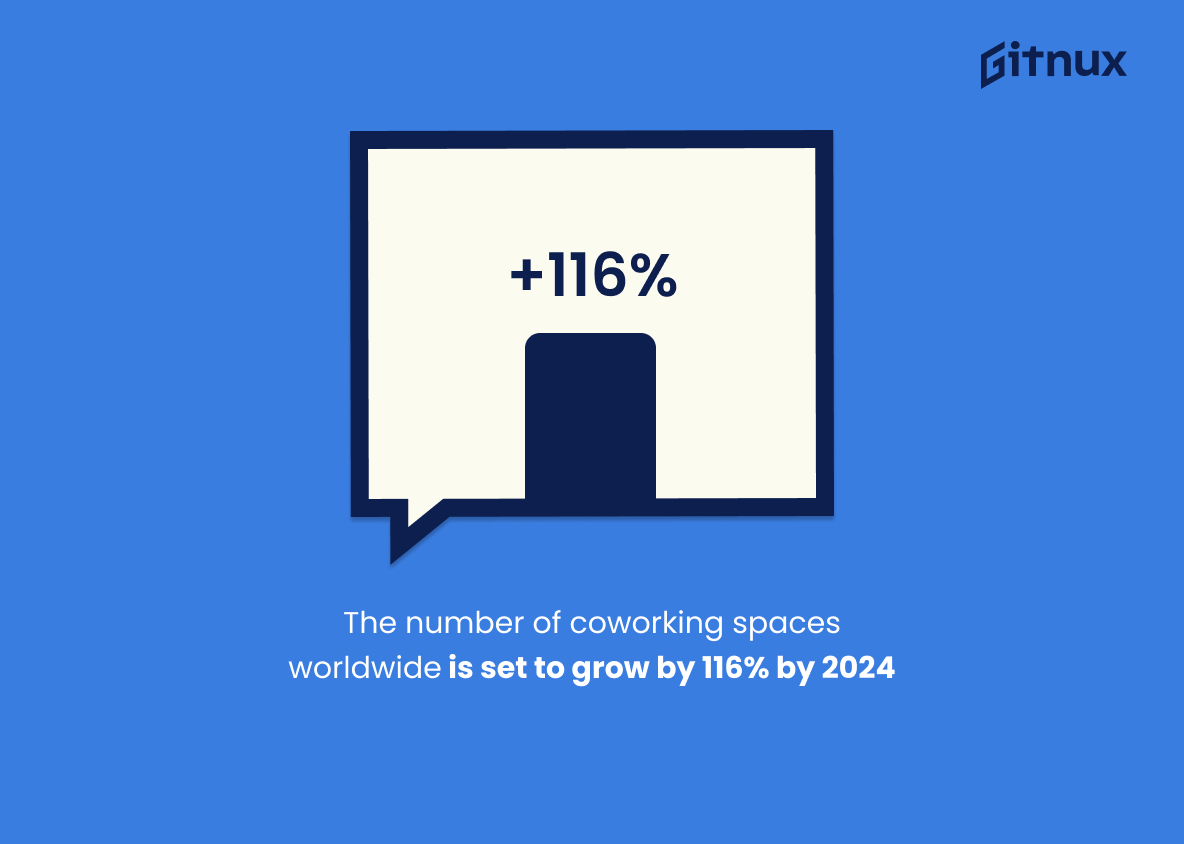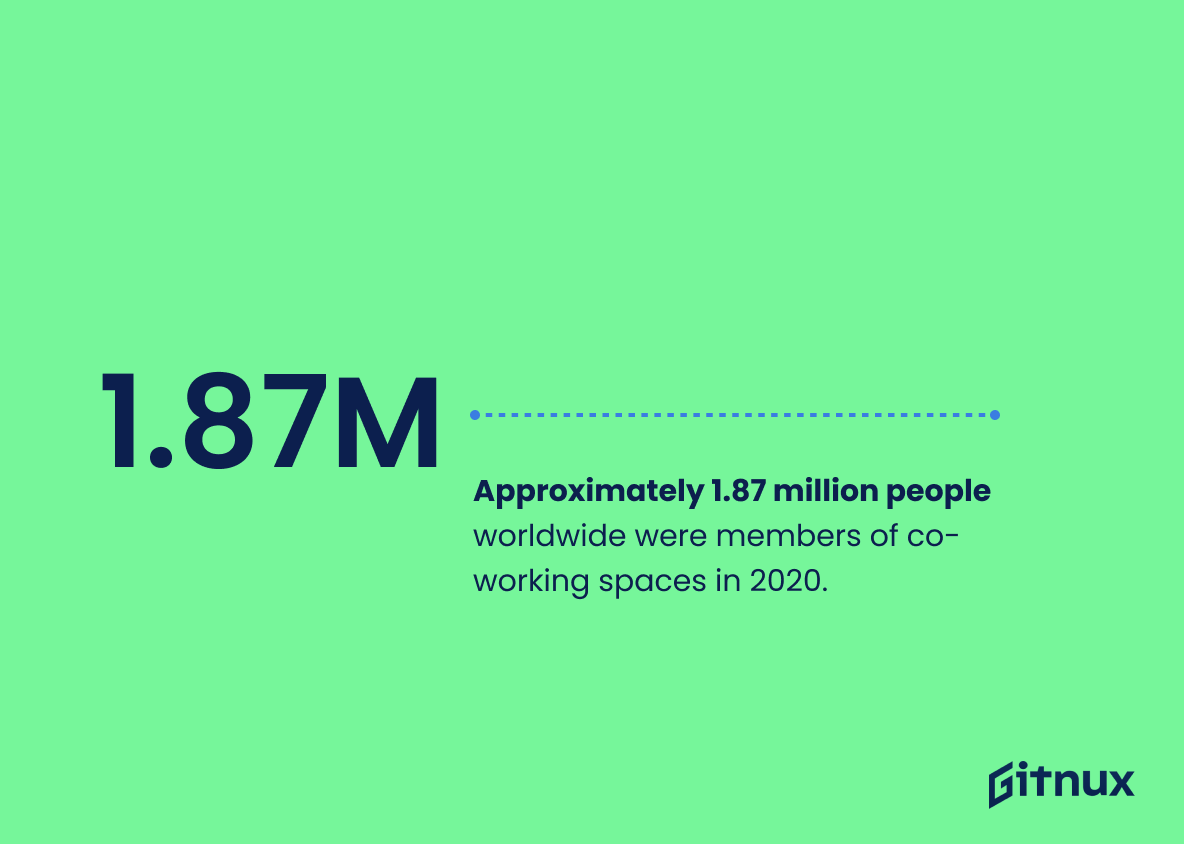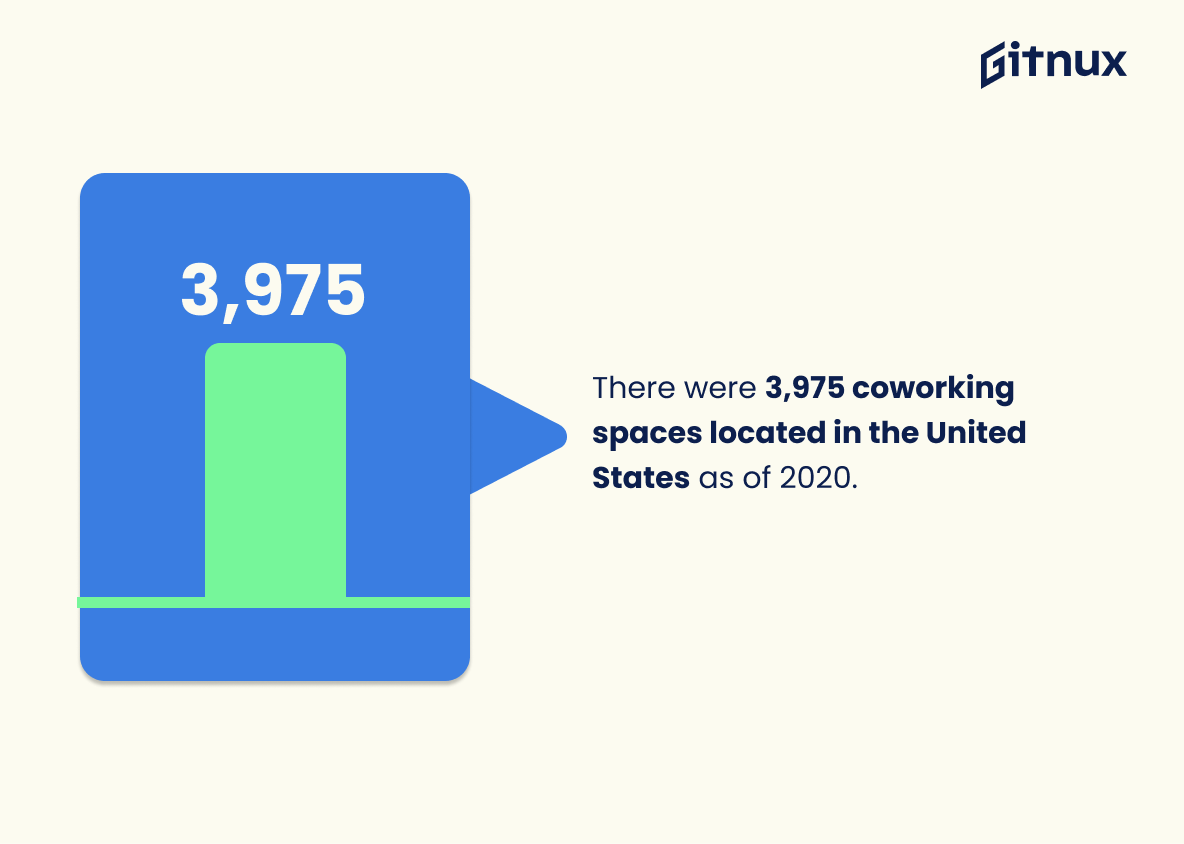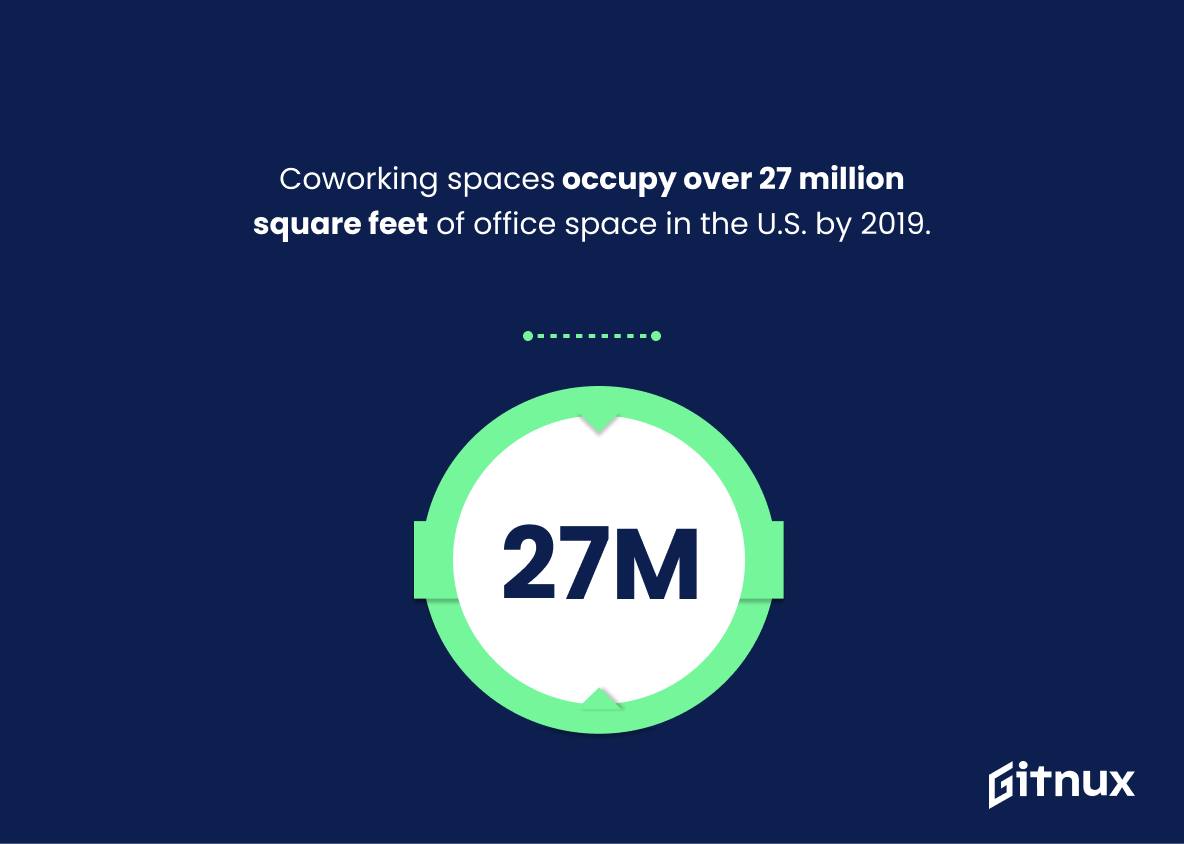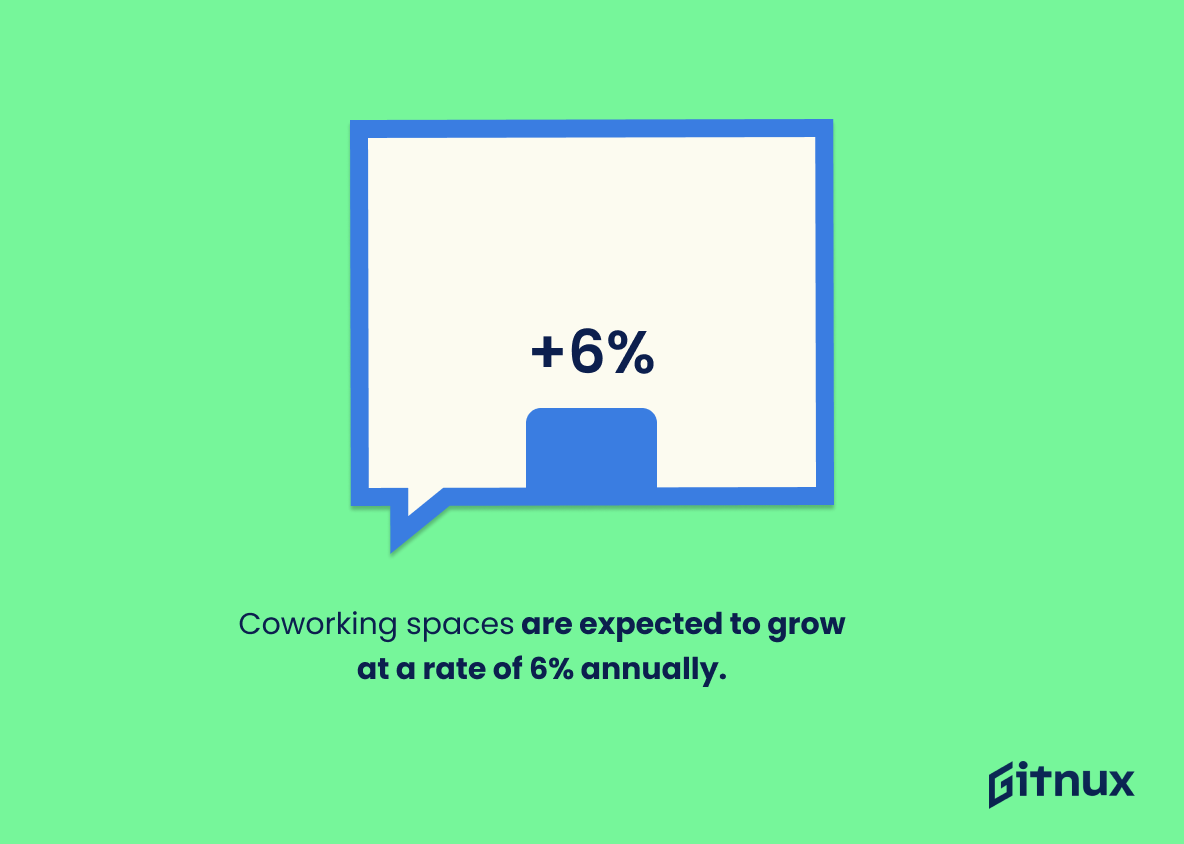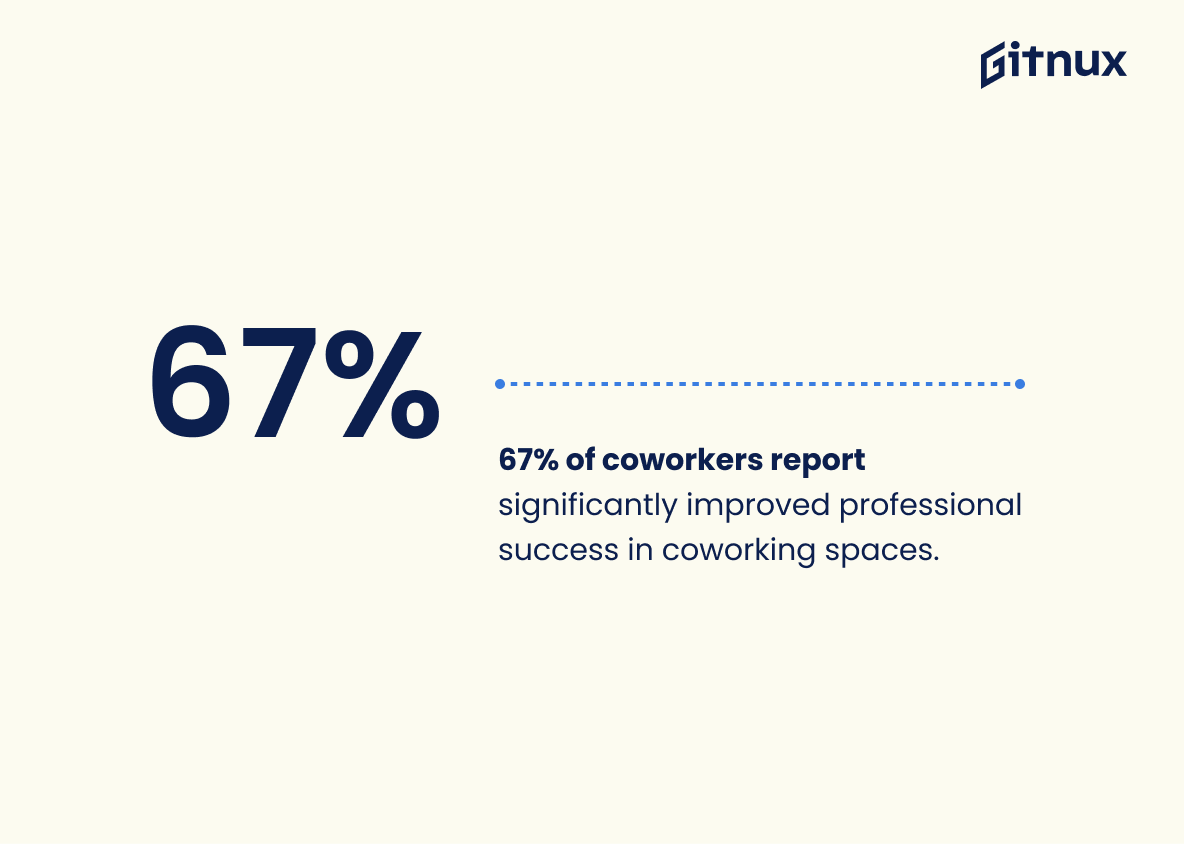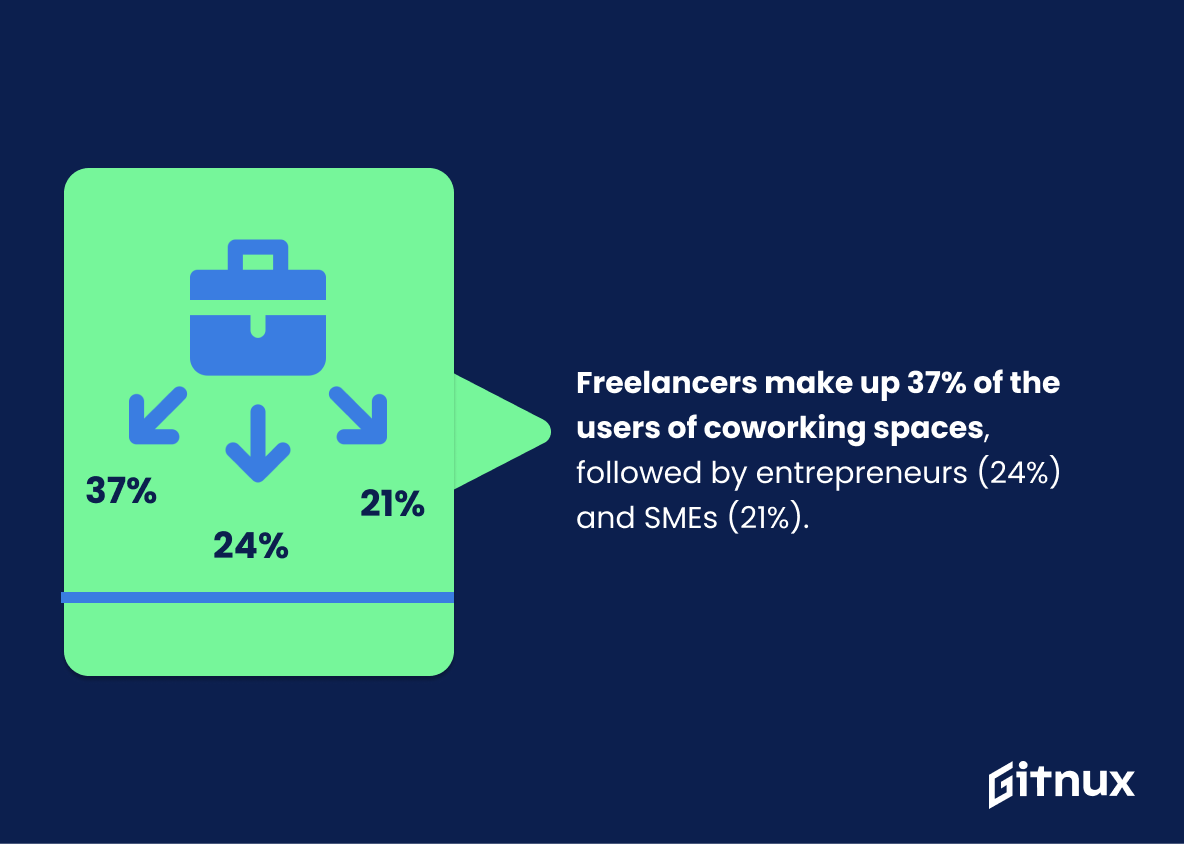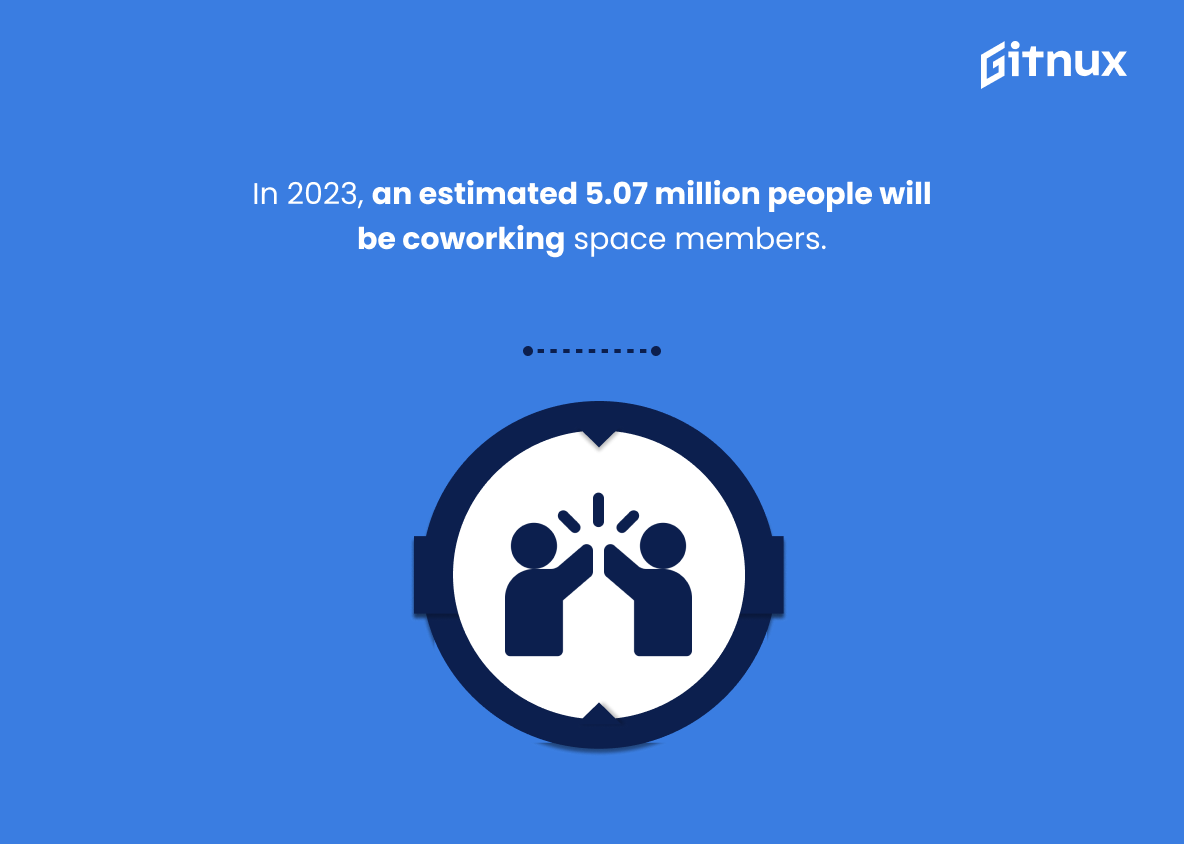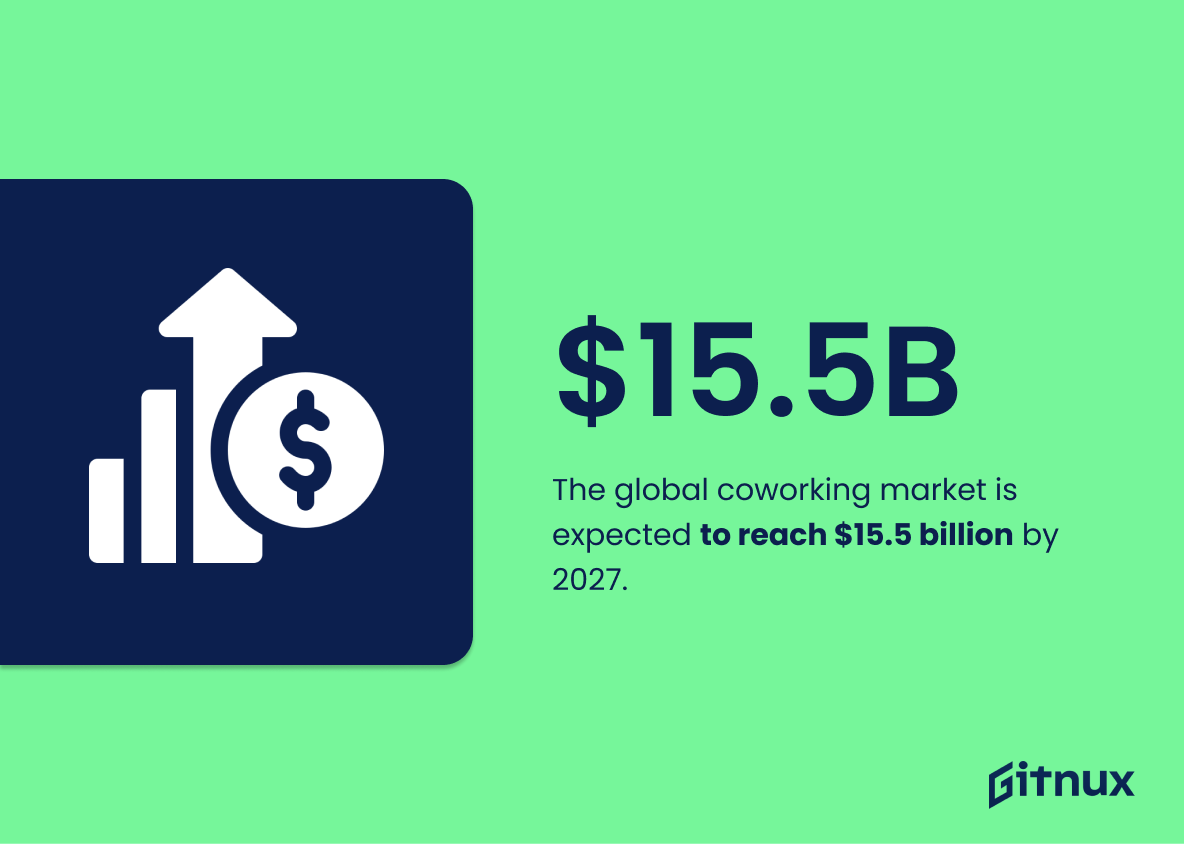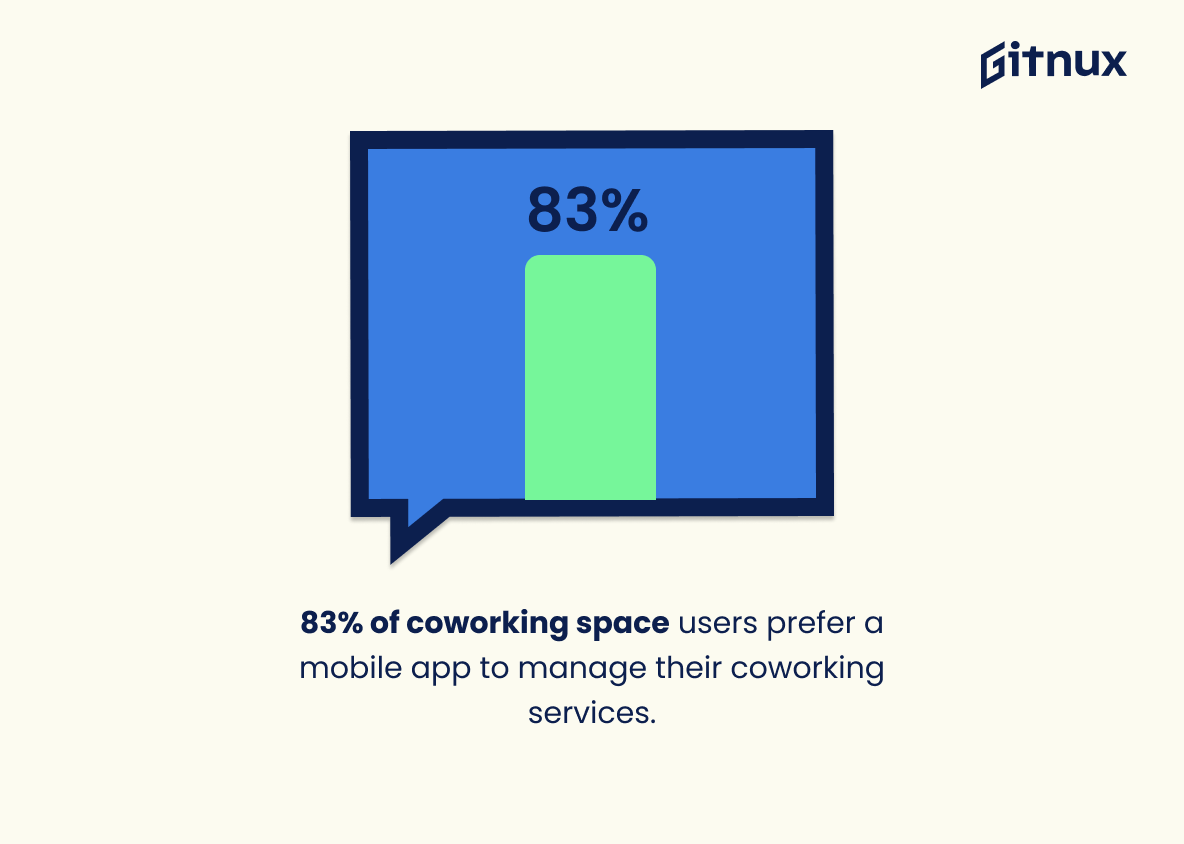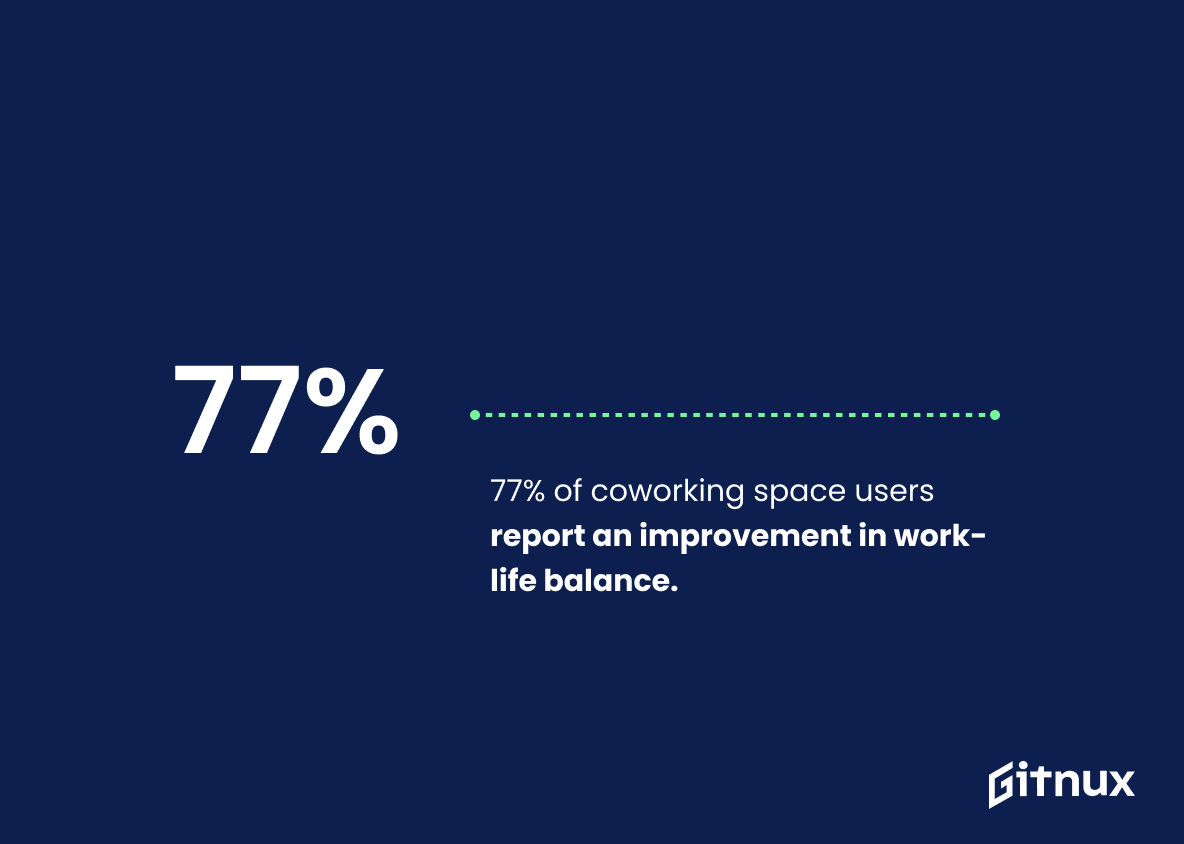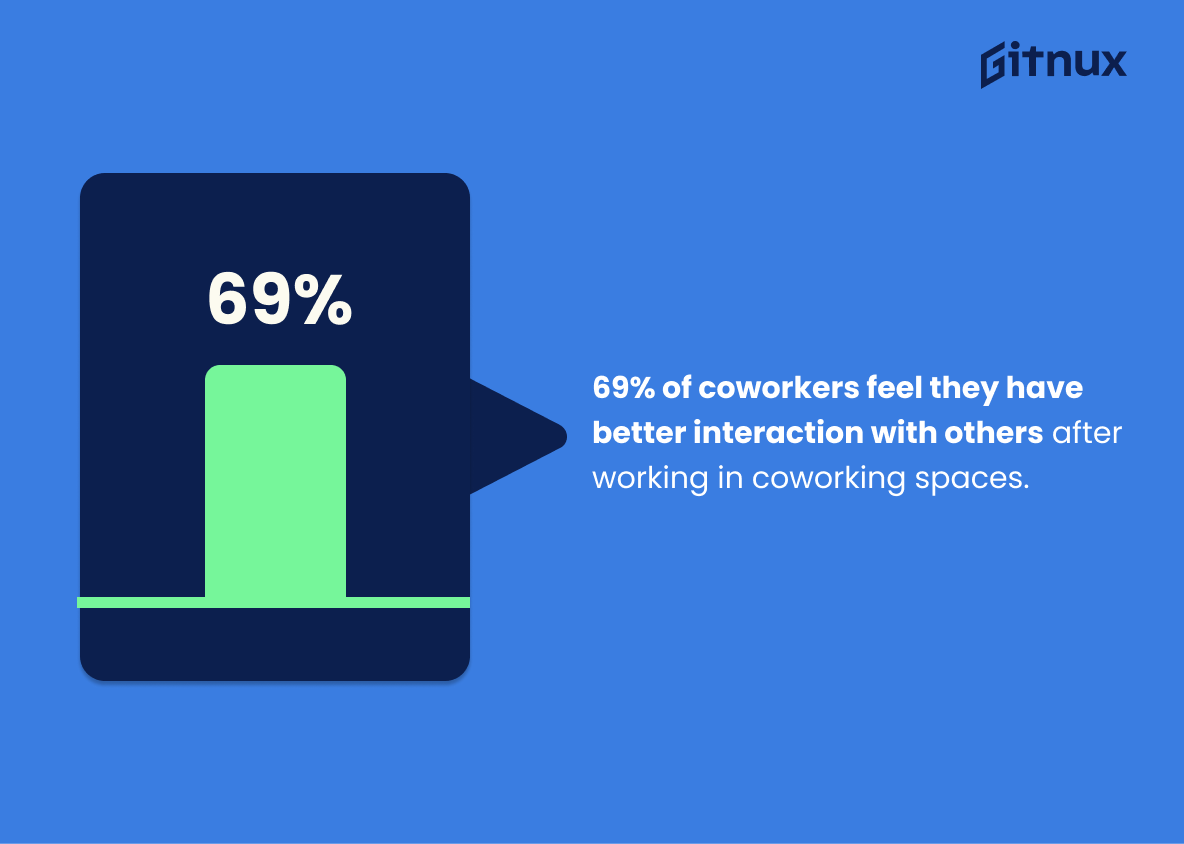Coworking spaces started getting really popular recently, as they provide comfortable workspaces for many freelancers and remote workers for a reasonably good price. In this article, we will look at the most interesting coworking statistics and figure out why more and more people follow this trend, what are its main benefits and what are the perspectives on the future of shared workspace.
Coworking: The Most Important Statistics
There are approximately 18,700 coworking spaces around the globe. According to projections, there will be some 41,975 coworking spaces worldwide by the end of 2024.
42% of coworking space members around the world are freelancers.
Coworking office spaces are expected to grow at 13% per year.
General coworking statistics
According to Statista, there are approximately 18,700 coworking spaces around the globe. According to projections, there will be some 41,975 coworking spaces worldwide by the end of 2024.
On average, 40% of coworking spaces are profitable, according to responses to the second Global Coworking Survey. This initially disappointing figure masks some more complex factors.
74% of all coworking space operators maintain a second job in addition to their management duties. As the majority of coworkers report a boost to their conditions, so too must managers receive situational benefits from working in their own space.
40% of coworking space members are female.
55% of those using a coworking space still work in the same one they started in.
There has been a 158% increase in coworking spaces since 2020. The coworking space demand has been high over the last few years, prompting more expansion in this industry.
35,000 coworking spaces in the world amount to around 521 million square feet of space.
80% of all the spaces available are divided among the 10 biggest operators such as ImpactHub, WeWork, Regus etc.
The number of people working remotely has grown by 44% in the last 5 years.
The estimated value of flexible workspaces globally is 26 billion USD.
72% of shared office facilities become profitable within 2 years of their opening. Coworking operators generate 61% of their revenues from renting out desks.
The average coworking space around the globe is 7,308 square feet.
The average age of coworking space members around the world is 36 years old.
Women made up over 50% of coworking space members globally for the first time in 2019.
20% of coworking space members work in IT.
42% of coworking space members around the world are freelancers.
In 2017, there were nearly 4,000 coworking spaces in the U.S. alone. While that number pales in comparison to London’s 1,400 spaces two years later, it is increased to 6,200 by the end of 2022. This means an increase of 55% in a span of 5 years, which is quite significant, and it’s not slowing down.
It’s important to note that the average coworking space had 190 paying members in 2019, almost 4x what it was in 2012.
There are an estimated 35,000 flexible workspaces in the world today. The global market value of flexible workspaces is estimated at approximately 26 billion USD. Despite the negative impact the COVID-19 pandemic has had on the rising of coworking spaces, the industry is expected to continue growing and thriving in a post-pandemic world.
Benefits of the coworking model and shared workspace
69% of office workers say they are more productive when they can work in a variety of settings during the workday.
43% of businesses believe a good coworking space should foster team building and collaboration.
Globally, 47% of remote workers say that isolation and loneliness are some of the biggest challenges of working remotely. This can be improved by doing work in coworking spaces. 83% of coworking space members said that they’re less lonely after joining a coworking space.
Joining a coworking space is a good way to be around people, as 79% say that it has expanded their social networks.
80% of those surveyed look to their coworking comrades for assistance or guidance, and 64% said that they get additional freelance work or projects from the connections they make there.
Joining a coworking space made 89% of members happier.
84% of coworkers feel motivated and engaged.
This ability to have human connection makes a big impact on workers’ overall levels of happiness as well, as 89% reported that they are happier since joining a coworking space.
69% of coworking space members said they had learned new skills in a coworking space.
In 2015, researchers discovered that coworking space members score an average of 6 out of 7 on a scale that measures how employees are thriving.
Coworking statistics from different countries
The number of coworking spaces in the US increased from just 22 in 2007 to 4,528 in 2018.
American workers account for 45% of the global coworking industry.
There are approximately 933,000 people in the US who use more than 6,200 coworking spaces.
In North America, the average size of a coworking space is about 9,799 square feet, with an average of about 100.14 people using that space. That works out to just under 100 square feet per person.
London is the world leader in the total number of coworking spaces. In 2019, that number reached over 1,400 spaces, while the runner-up, the American city of New York, had less than half as much, with its 550 coworking spaces. Finally, the third spot goes to Hong Kong, which counted 320 spaces in 2019.
As of March 2022, Europe concentrated approximately 4,200 flexible workspaces. In addition to that, Asia had over 4,100 spaces dedicated to flexible work. In 2020, there were around 1.93 million people working in coworking spaces worldwide. In 2019, the leading serviced office company in the world in terms of global market share was Regus.
The US only had about 4,000 coworking spaces available in 2017, meaning the number of coworking spaces has grown by roughly 55% in 5 years.
There are approximately 19,400 coworking spaces available in the world, and over 6,200 of those are in the US as of 2022.
1.933 million people across the globe used coworking spaces in 2020, and about 865,000 of those people live and work in the US.
Speaking of the coworking market in Europe, the share of flexible workspaces made up more than 20% of all office take-up in Stockholm, Brussels, and London’s West End in 2018. Some cities in this ranking with a relatively high share, however, do not necessarily have a high rental price for prime office properties. Local supply, and a possible lack thereof, seems to be the main driver so far behind the current flex concepts.
New York and London are the world’s leading cities when it comes to new spaces opening up.
In 2020, the average monthly hot desk price in North America was $243.
The US has 18.3% of the world’s coworking spaces.
The average coworking space in the US fits 105 people. Globally, the average capacity is 83 people.
Asia has the highest average capacity with 114 people per coworking space, and South America has the lowest at 54 people.
While the US has almost 20% of the coworking spaces on the planet, India makes up about 10%, followed by the UK with a 5% share.
Asia Pacific (India included) leads with 11,592 shared working spaces.
What are the perspectives on coworking?
The number of people working in coworking spaces worldwide is predicted to double between 2021 and 2024, reaching 5 million people.
The global coworking spaces market is poised to grow by 13.35 billion USD during 2021-2025, progressing at a CAGR of over 11% during the forecast period.
According to Statista projections, there will be some 41,975 coworking spaces worldwide by the end of 2024.
The number of coworking spaces worldwide is set to grow by 116% by 2024 and reach a projected 41,975 spaces. Around 5 million people will work in coworking spaces by 2024.
30% of offices will be based on this model by 2030.
Coworking office spaces are expected to grow at 13% per year.
Supplementary Statistics
Approximately 1.87 million people worldwide were members of co-working spaces in 2020.
More and more people are turning to these shared workspaces to get their work done. It is a clear indication that the coworking industry is thriving, and that it is becoming an increasingly attractive option for those looking for a flexible and collaborative workspace.
There were 3,975 coworking spaces located in the United States as of 2020.
More and more people are turning to coworking spaces as a way to work, collaborate, and network. This statistic is a great indicator of the potential of coworking spaces to become a major part of the American workplace.
Coworking spaces occupy over 27 million square feet of office space in the U.S. by 2019.
More and more businesses are turning to coworking spaces as an alternative to traditional office spaces, and that the trend is only increasing. This statistic is an important indicator of the changing landscape of the workplace and the increasing demand for flexible, collaborative workspaces.
40% of coworking space users are freelancers, while 36% are entrepreneurs and small companies.
Freelancers and entrepreneurs alike are taking advantage of the collaborative and flexible environment that coworking spaces provide. This statistic is a testament to the growing popularity of coworking spaces and the potential they have to revolutionize the way we work.
Coworking spaces are expected to grow at a rate of 6% annually.
More and more people are turning to coworking as a viable option for their work needs. This is an important statistic to consider when discussing the current state of coworking, as it provides insight into the potential future of the industry.
67% of coworkers report significantly improved professional success in coworking spaces.
The collaborative environment of coworking spaces can be a major factor in helping individuals reach their professional goals. This statistic is an important piece of evidence that can be used to illustrate the effectiveness of coworking spaces in helping people achieve their career objectives.
Freelancers make up 37% of the users of coworking spaces, followed by entrepreneurs (24%) and SMEs (21%).
These three groups are the primary users of coworking spaces, and freelancers are the most frequent users. This is an important insight for anyone looking to understand the dynamics of coworking spaces and the people who use them.
In 2023, an estimated 5.07 million people will be coworking space members.
More and more people are recognizing the benefits of coworking and are choosing to become members of these spaces. This is an important indicator of the potential of coworking spaces to become a major part of the future of work.
The global coworking market is expected to reach $15.5 billion by 2027.
The market is expected to expand significantly over the next few years. It is a clear indication that coworking is becoming an increasingly attractive option for businesses and individuals alike, and that the trend is likely to continue in the future.
This statistic is an important piece of information for anyone interested in the coworking industry, as it provides a glimpse into the potential of the market and the opportunities it presents.
83% of coworking space users prefer a mobile app to manage their coworking services.
The majority of users prefer to manage their coworking services through a mobile app, which speaks to the convenience and ease of use that these apps provide. This statistic is an important piece of information to consider when discussing the current state of coworking and the trends that are shaping the industry.
77% of coworking space users report an improvement in work-life balance.
Coworking spaces are not just a place to work, but a place to find balance and satisfaction in both work and life. This statistic is an important reminder that coworking spaces can be a great resource for those looking to improve their work-life balance.
69% of coworkers feel they have better interaction with others after working in coworking spaces.
Coworking spaces are not just places to work, but also places to build relationships and collaborate with others. This statistic is a reminder that coworking spaces can be a great way to build relationships and create a sense of community.
By 2030, coworking spaces could make up 30% of corporate office space.
By 2030, coworking spaces could become a major part of the corporate office space market, providing businesses with a more flexible and cost-effective way to work. This could have a huge impact on the way businesses operate, and could lead to a more collaborative and productive work environment.
Conclusion
Coworking is a great alternative to traditional office settings. It has lots of benefits, from cost savings to improved collaboration and productivity. It also makes workers happier, as shared workspace eliminates the biggest challenges of remote working – isolation and loneliness. This trend is likely to continue, as more people become aware of the many advantages of this type of workspace. And the latest studies and surveys confirm it.
Check out Remote Work Statistics
References
Statista: “Number of coworking spaces worldwide from 2018 to 2020 with a forecast to 2024” , cited in January 2023 (Source)
Deskmag: “How Profitable Are Coworking Spaces?”, cited in January 2023 (Source)
Wonder: “What is the size coworking industry (ie how many users / customers ) and how does that demographic break down by gender and age?”, cited in January 2023 (Source)
What To Become: “Making the Most of Sharing Space – Coworking Statistics for 2021”, cited in January 2023 (Source)
AP News: “Impact of COVID-19 on the Global Coworking Spaces Market, 2020-2030 – ResearchAndMarkets.com”, cited in January 2023 (Source)
TeamStage: “Coworking Statistics: Shared Workspace in 2022”, cited in January 2023 (Source)
Zippia: “33 Captivating Coworking Statistics [2023]: Facts And Trends You Need To Know”, cited in January 2023 (Source)
Andcards: “11 Coworking Space Statistics to Keep in Mind in 2022”, cited in January 2023 (Source)
HubStar: “The Rise of Co-Working Spaces”, cited in January 2023 (Source)
DropDesk: “Coworking Statistics & Trends for 2022”, cited in January 2023 (Source)
Research and Markets: “Global Coworking Spaces Market 2023-2027”, cited in January 2023 (Source)
Coworking Insights: “Number of Coworking Spaces Worldwide to Reach 20k by 2021, New Growth Study Shows”cited in January 2023 (Source)
ZipDo, cited June 2023: Coworking Statistics

